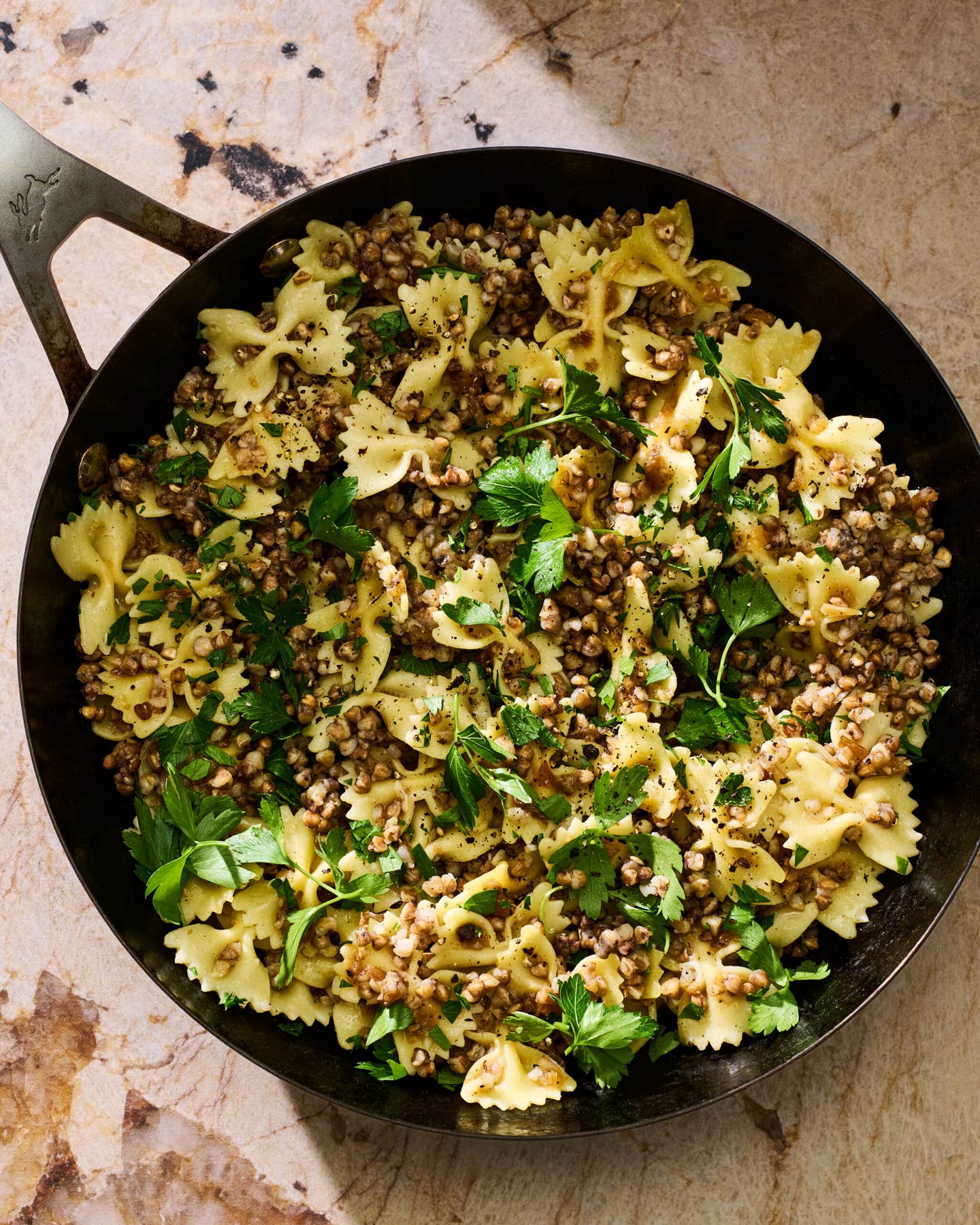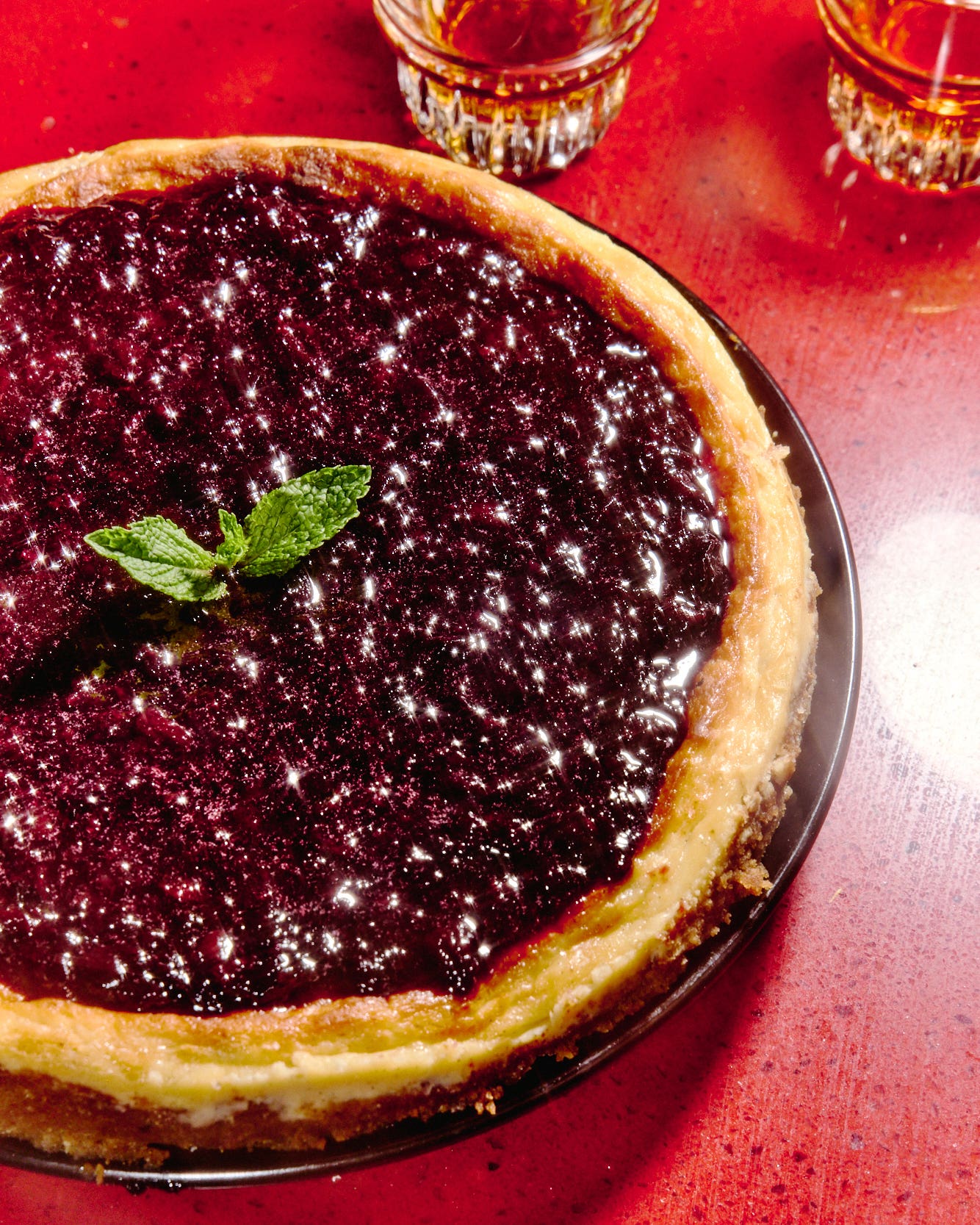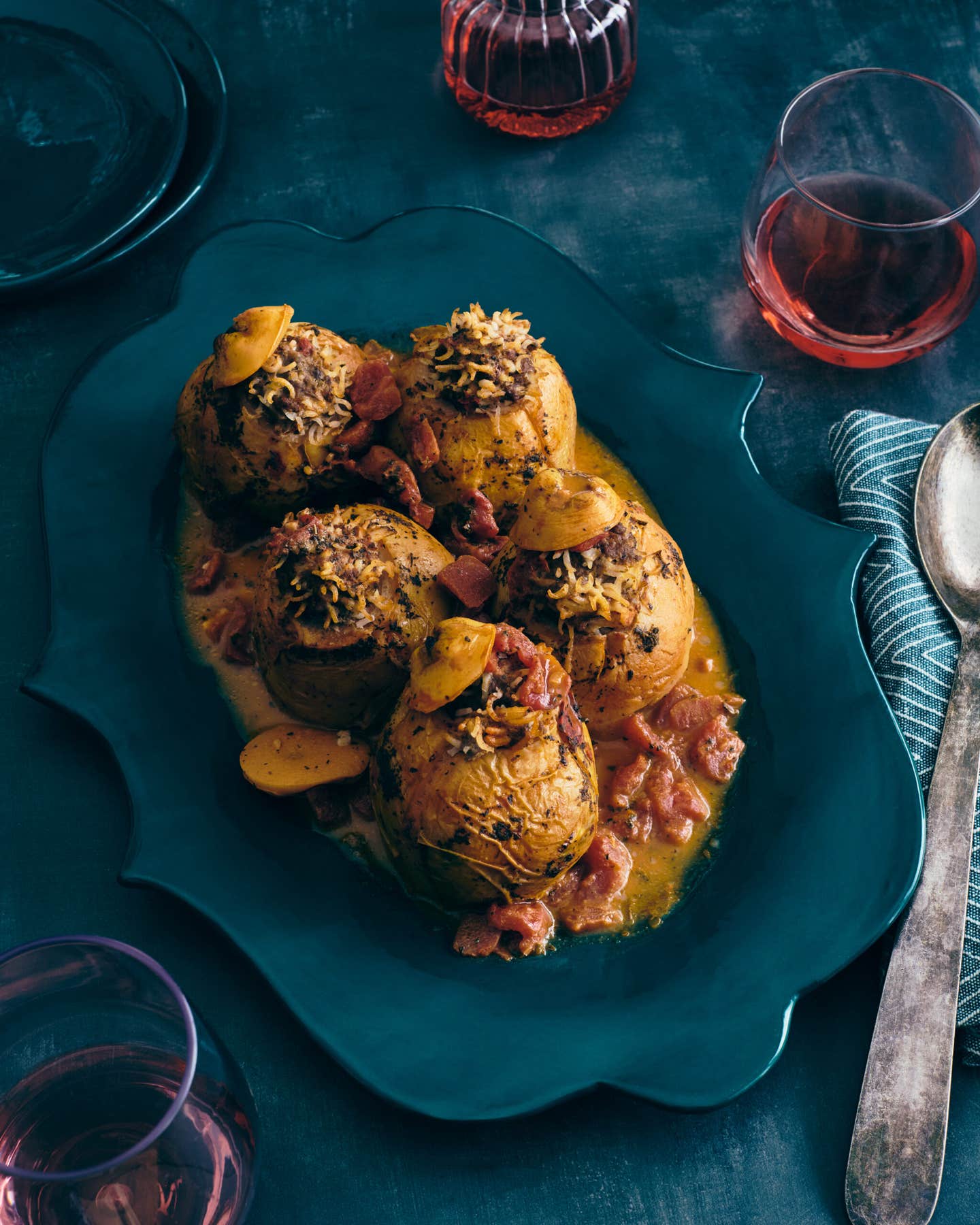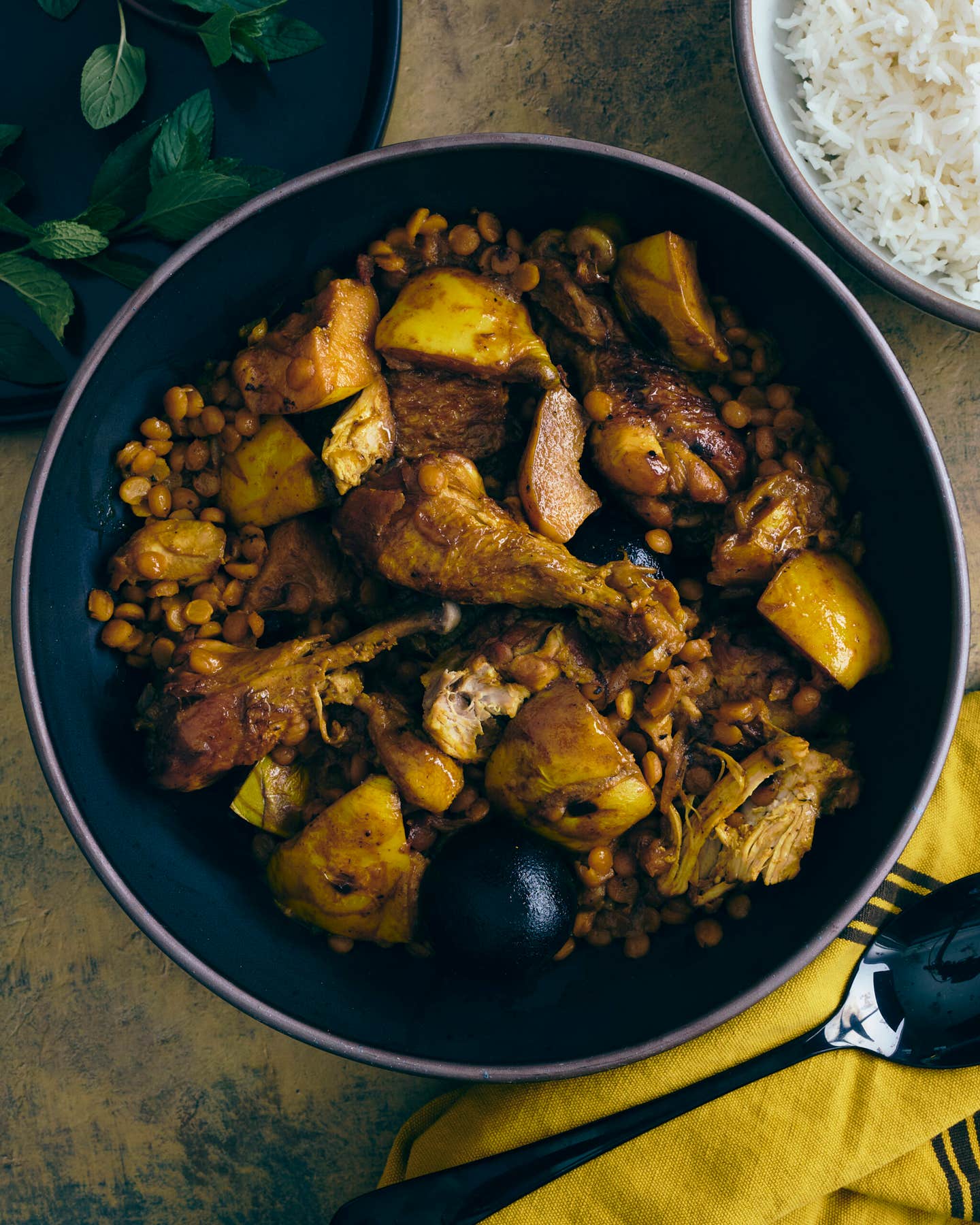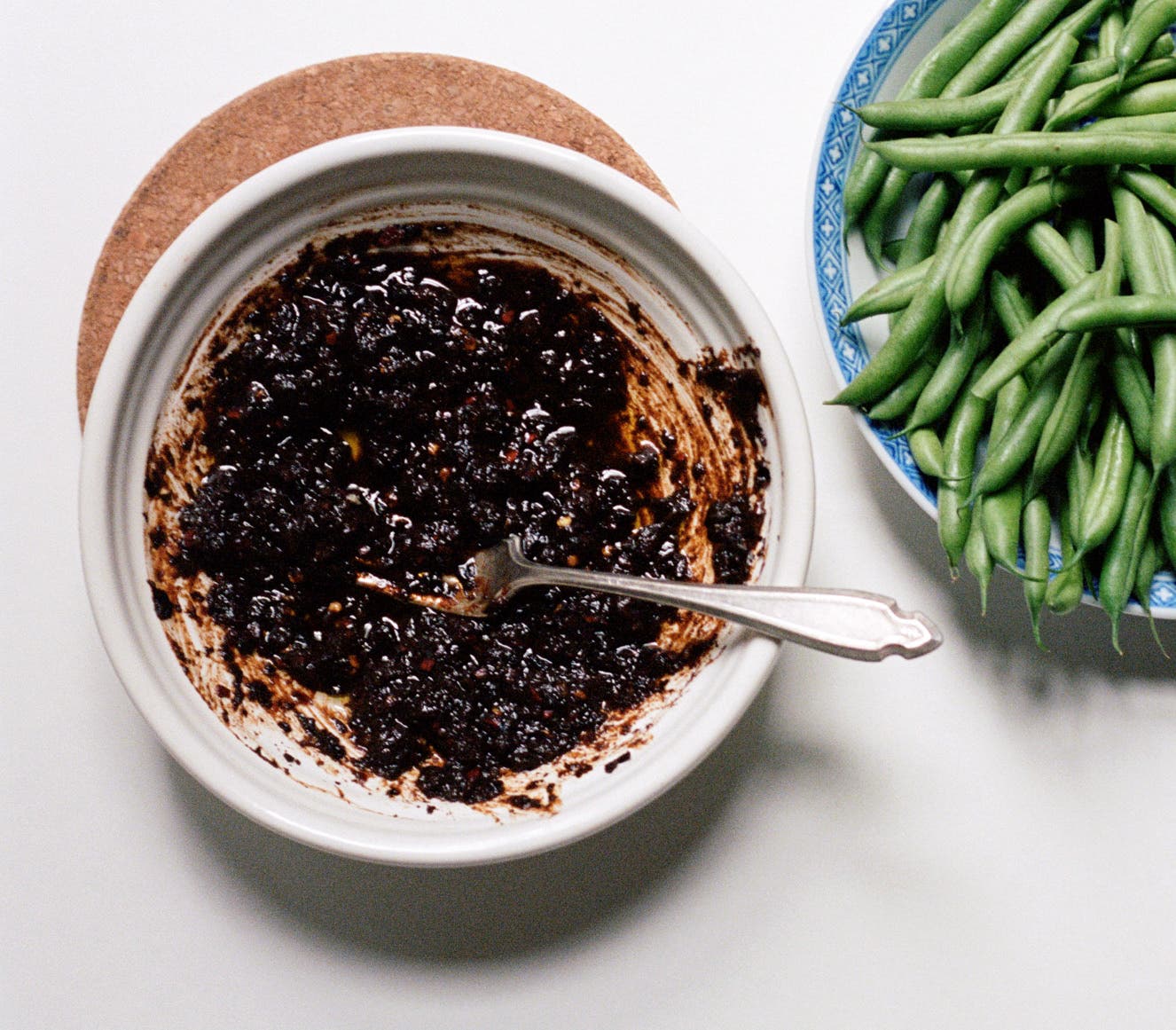
Fermented Black Beans are the Savory Superpower Every Pantry Needs
From classic meaty dishes to modern, plant-based fare, this ancient Chinese ingredient continues to be a must-have.
When I was growing up, my mother made wok-tossed mussels on Friday nights. As she placed the platter of green-tinged shells onto the table, I would immediately push the briny shellfish aside, then covetously ladle their glossy dark sauce over my bowl of rice. For me, the mussels were never the star of this meal. Instead, it was all about that salty, spicy fermented black bean sauce.
My mother was born in Guangdong Province in Southern China. She left her homeland on the precipice of the cultural revolution, and eventually settled in Sydney, Australia. Here, without the English language skills or education needed to find work, she cooked the food of her youth with fervor. From big breakfasts of fried rice or macaroni soup, to the fermenting pork, fish, ginger, and eggs she prepared for future meals, to her generous, banquet-style dinners, food was an unbreakable tether to her homeland. And for as long as I can remember, dou si (also known as dou chi to Mandarin speakers, or fermented black beans in English) has been a prevalent ingredient in her flavorsome Cantonese home cooking.
For her favorite classic vegetable dish, she stir-fried bitter melon with dou si. For a meatier course, pai gwut, she added the beans to juicy chunks of pork spare-ribs. And for ju yook biang—her signature steamed “pork cake” and a staple throughout my childhood—tiny beads of black beans burst through tender meat with an intense and irresistible saltiness. On the few occasions my mother wasn’t up to cooking a lavish dinner, she rewarded my siblings and me with canned fried dace. The rich and oily fish packed with salty dou si right in the can was a special treat, and the only accompaniment we needed with white rice.
The world’s oldest known soybean product, dou si is laced with history and significance to the Chinese. In 1972, it was found inside a tomb in South Central China that had been sealed since 165 BCE. The beans were also mentioned in Shiji, a monumental history of ancient China completed in the first century BCE by a Western Han Dynasty official, Sima Qian. Still today, dou si remains an important and widespread ingredient not only in China, but also throughout East and Southeast Asia. In Korea, the beloved noodle dish jajangmyeon is topped with a black bean sauce called chunjang; in the Philippines, bangus sa tausi is a tomato and fermented black bean fish stew; and in nearby Indonesia, the beans are used to season kakap tahu tausi, a dish of fried snapper and tofu.
Made from black soybeans that have been inoculated with mold, dou si is then salted and left to dry. Time—six months or so—imparts a robust, multi-dimensional flavor, reminiscent of other aged foods like parmesan cheese and olives. In my kitchen, the ingredient is a weeknight workhorse, and a quick way to add nuance and complexity to a meal with minimal effort and ingredients. It can be added to stir-fries, stews, braises, or even salad dressings to enhance more subdued flavors. And while store-bought black bean sauce is a useful convenience, having a stash of the whole fermented black beans in your pantry is even more useful. Fortunately, fermented black beans are very shelf-stable, and making your own intensely aromatic black bean sauce at home is surprisingly easy: Simply soak the beans to rehydrate, then mash them up with a bit of water, a few seasonings, and a little oil. Here are three of my favorite ways to use this essential ingredient at home.

Blend Dou Si Into a Fresh and Funky Vegan Dressing
My most recent discovery is incorporating dou si into salad dressings. While not a traditional use for this ancient ingredient, dou si is perfect for this purpose, as it injects both savoriness and sharpness—notes which are sometimes lacking in vegan recipes. Use the beans as you would soy sauce to add salty depth to a vinaigrette, or add to chile oil and rice vinegar for an assertive Asian-style dressing. Dou si also has a lovely dense consistency and is a great thickener for loose sauces. It blends particularly beautifully in a plant-based Caesar dressing—simply blitz the beans with silken tofu and nutritional yeast to pack a creamy punch, without the need for anchovies, eggs, or parmesan. This dressing should not be reserved for vegans, as dou si brings a confident swagger to this classic sauce which will have you rethinking the possibilities of a Caesar salad.
Punctuate Soups, Stews, and Braises with a Savory Kick
Dou si lends a lovely richness and depth to cooked vegetable dishes. My mother’s vegan mapo tofu typically features doubanjiang—the other fermented bean sauce, which is made with fava beans—but to cater to my children’s more sensitive palates, I often use dou si instead. The black beans provide plenty of savoriness without doubanjiang’s added spice.
You can also use whole or mashed dou si as you would miso, by adding it to soups and sauces, or even to top savory oat porridge or jook (congee). It can be added at various stages of cooking to achieve different effects—incorporate at the beginning to deliver an umami note to the overall dish, or add at the end for a sharp, funky flavor.
Make Your Own Chile-Black Bean Sauce
The bold taste of dou si has a natural affinity with fresh seasonal vegetables. Steamed eggplant with black bean sauce is a classic dish, in which the savory jewels coax both sweetness and earthiness from the silky nightshade. Dou si stir-fried with fresh seasonal vegetables is a staple in my home, and one of the simplest, quickest, and most delicious weeknight meals I make. The punchy sauce lends itself well to a crisp, barely-fried vegetable like cauliflower, broccoli, asparagus, or green beans. My stir-fried green beans recipe features a black bean sauce made from scratch, and even with this extra step, it comes together in just a few minutes. So much flavor, so little effort.
Hetty McKinnon is a Chinese Australian cook and food writer based in Brooklyn, New York. She is the author of four bestselling cookbooks, including her latest, To Asia, With Love: Everyday Asian Recipes and Stories from the Heart.She’s also the editor and publisher of multicultural food journal Peddler and the host of the podcast The House Specials.
Keep Reading
Continue to Next Story

